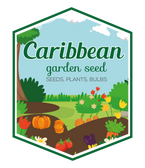
Goldenseal Herb Seeds
- Get free shipping to lower 48 states on orders $54.95+ (Most Items), excluding live plants, plant bulbs, and black plastic nursery crate.
- Most orders are processed by the next day !
- Safe Seed Pledge
- Select your desired size and/or color from the available options.
Medicinal Native American Herb !
Hydrastis canadensis) Also known as Yellow root,
Ground raspberry, Orange root, Puccoon, and Wild curcumaGoldenseal (Hydrastis canadensis) is native to northeastern United States and the southeastern Canada.
It is also known as Yellow root, Ground raspberry, Orange root, Puccoon, and Wild curcuma. The plant is a perennial herb under the buttercup family Ranunculaceae. It is a small plant that has a single hairy stem and two five lobed, pointy leaves, small flowers, with raspberry-like fruit.
The bitter tasting bulb, or root, is bright yellow or brown, wrinkled, and bent. Goldenseal was traditionally used by Native Americans to treat skin disorders, liver conditions, digestive problems, diarrhea, and eye irritations
Goldenseal Growing Instructions
Goldenseal is a native perennial and occurs over the same range and under the same wooded conditions as ginseng. The cultural requirements for Goldenseal are the same as for ginseng and it is often grown under the same wooded conditions or shade structure. (Please see Ginseng Growing Instructions for more information on growing conditions.)
Goldenseal plants emerge in early spring from buds on perennial rootstocks. Goldenseal is propagated by seed, rhizome divisions, or rootlet cuttings. Similar to ginseng, goldenseal seed requires stratification before it will germinate. However, goldenseal seeds will germinate the following spring after harvest unlike ginseng which takes about 18 months to germinate.
Goldenseal rootlets or seed should be planted in a similar fashion to the way ginseng is planted. When planting small amounts the leaves can be raked back and the soil worked slightly. The seeds can be planted about 1/4"-1/2" deep and the rootlets can be covered with about 3/4"-1" of soil. A mulch can then be placed back over the planted area. One thing that we have noticed when growing goldenseal is that goldenseal has a toughter time coming through the mulch than ginseng does. This has led us to loosen the mulch or remove some of the mulch in spring prior to the plants sprouting to help the plants emerge easier. Roots can be planted in 8" rows spaced 8" apart. Seed can be planted in 3" rows spaced 3" apart.
When planting larger areas of goldenseal the soil can be tilled and formed into beds similar to ginseng. A straw or sawdust mulch can also be used. It will usually require about 3-5 years for goldenseal to mature.
The tops of goldenseal can also be harvested and dried for sale. They should be harvested and dried in the fall when they are still green. The goldenseal roots can be harvested after the plants go dormant in the fall.
Origin: US Native
Other Common Names: Yellow Puccoon, Ground Raspberry, Turmeric Root
- Duration: Perennial
- Bloom Time: Spring
- Height: 8â to 12â
- Spacing: 12â to 15â
- Light: Part Sun to Woodland
- Soil Moisture: Medium
- USDA Zone: 3a-7b
Germination: Sow seeds just below moist soil surface at 70F for 1 month. Move to 30F for 1 month, then bring back to 50F.
Highly valued for it's herbal properties, Goldenseal has become a threatened native plant in some areas due to the over-collection of it's rhizomes. Prized more for it's medicinal value than it's beauty, this wildflower bears one, small, rather inconspicuous white flower, which then gives way to an attractive, but inedible cluster of scarlet berries. The early Americans used the rootstock for a variety of purposes, including tonic, diuretic, an insect repellent, and yellow dye! All parts of this plant are poisonous if ingested in large doses. Overall, care should be exercised, not only for your own safety
LET OUR CUSTOMER SPEAK FOR US

![[Seeds] - Caribbeangardenseed](http://caribbeangardenseed.com/cdn/shop/files/gift-card-gift-card-1_1024x1024_dfa857db-9150-4315-a362-7f0bb3fb9c47_60x28.png?v=1722895789)








